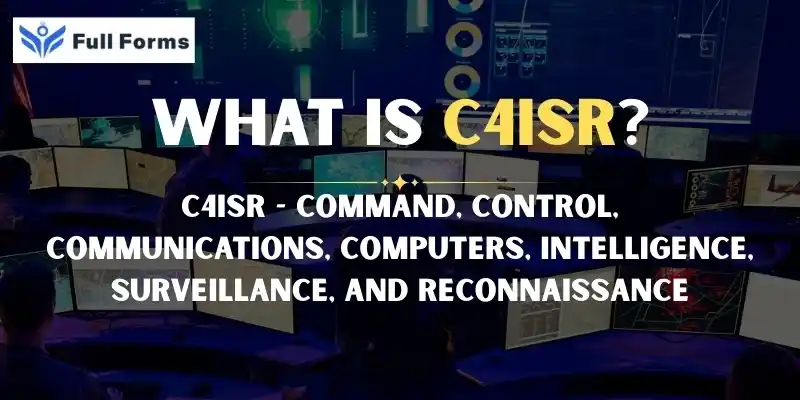Command, Control, Communications, Computers, Intelligence, Surveillance, and Reconnaissance
(C4ISR)

Description
C4ISR: The Brain of the Modern Military
Strength and numbers alone are not enough to determine victory at the front lines in today's defense and combat environments. It mostly depends on how well data is gathered, examined, and used. The complex but integrated system known as Command, Control, Communications, Computers, Intelligence, Surveillance, and Reconnaissance (C4ISR) operates as a single, powerful operational configuration.
explaining C4ISR, its importance, and how it is affecting defense strategies around the world.
What does C4ISR stand for?
Military forces use C4ISR, an integrated system, to support decision-making, coordinate operations, and preserve a competitive edge. Every element in the acronym serves a specific purpose:
Command refers to the power granted to military leaders to decide and lead troops.
Control dwells on the management of such decisions and their proper execution. Communications ensures a share flow and receipt of information at all levels, in real-time. Computers represent those digital systems and networks involved in processing, storing, and transmitting data. Intelligence entails information about threats, movements of the enemy, or conditions on the battlefield. Surveillance refers to monitoring over time; reconnaissance is a mission to gain information.
Reconnaissance emphasizes active gathering, typically by means of field missions or drone deployment.
They constitute the heart of operational awareness and strategic military planning. In the modern military battlefield, timely information is the key differentiator between mission success and failure. C4ISR will make sure that commanders do not operate in the dark-they will be equipped with real-time data on threats as well as communication tools that would ensure a constant link with troops, allies, and other decision-makers. Knowledge of what is going on in the ground, air, or sea enables the military to respond with very swift and appropriate actions.
Better Coordination
Different units located at various places can operate jointly with the help of synchronized information.
Decision Based on Facts
Intelligence and surveillance make sure that decisions are based on facts, not assumptions.
Lower Risk
When movements or threats from enemies are detected in advance, forces can avoid risky situations and take proactive measures.
Actual Applications of C4ISR
C4ISR systems largely support and enable today’s contemporary military operations, from border security to major warfare battles. Examples include the following:
The use of drones and UAVs supports surveillance and reconnaissance within the area of responsibility.
Satellite communication enables ground troops wherever they may be located in some remote part of the world’s surface to maintain contact.
Artificial intelligence and data analytics are being integrated to ensure swift processing of large volumes of intelligence data and pattern identification that could indicate a threat.
Cyber defense systems are meant to protect the communications and computer networks where valuable information is kept.
These tools are not only used in times of war; even during missions meant to keep the peace, or when responding to disasters, and hunting down terrorists. C4ISR has a big role when it comes to coordination and planning.
Though it has many advantages, C4ISR faces a big challenge. The major issue is with data. Gathering information is easy but analyzing it and making sense out of it in real time is difficult. Different technologies from different vendors when integrated together create some compatibility issues.
Also, there is a steady risk of cyber threats. If the communication networks or command systems get hacked, the whole operation be compromised. Thus, maintaining very strong, secure as well as updated systems is an act of military forces who are users of C4ISR.
The more technology grows, the more future C4ISR will be
Artificial Intelligence, Machine Learning, Autonomous Systems, and 5G Communication are being implemented for enhancement of the systems in use. Near-future decision-making could be even faster and more predictive due to automation and advanced data modeling.
C4ISR will remain the nervous system, the very heart of connection between these domains to generate a single, unified yet always agile command structure as multi-domain operations become the norm. Multi-domain in its true sense: land; maritime; air; space, and cyber.
Conclusion
C4ISR has never been just hardware or software. It is a philosophy and a system applicable to the new paradigm of warfare, where information and orchestration are as important as might and main. From battle-space awareness to mission support, enabling an intelligent, agile, highly-effective force.
In the short, C4ISR has redefined the way modern militaries operate, and with more advancement in technology, it will be even more at the heart of matters of war and peace to deliver results.
